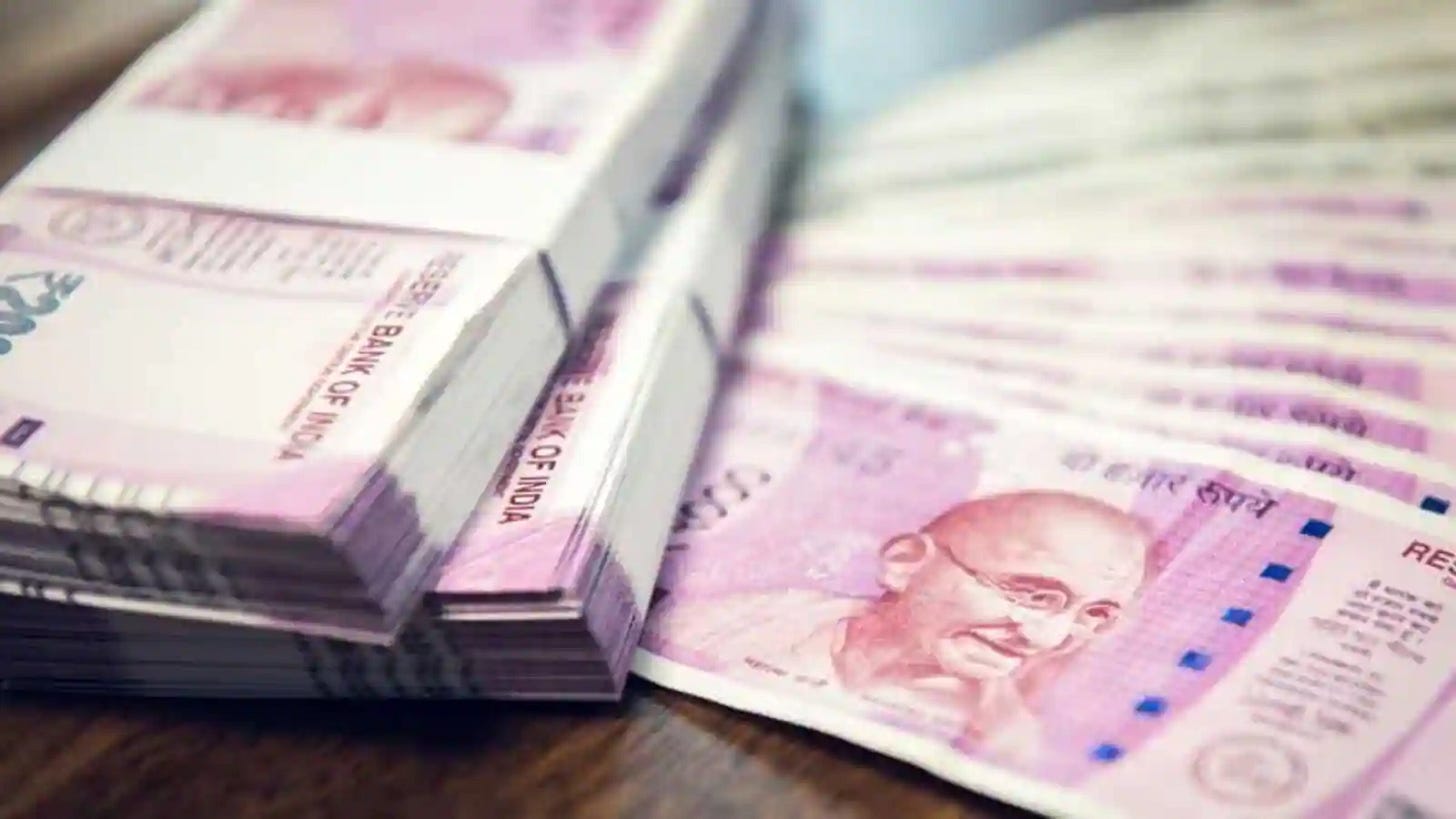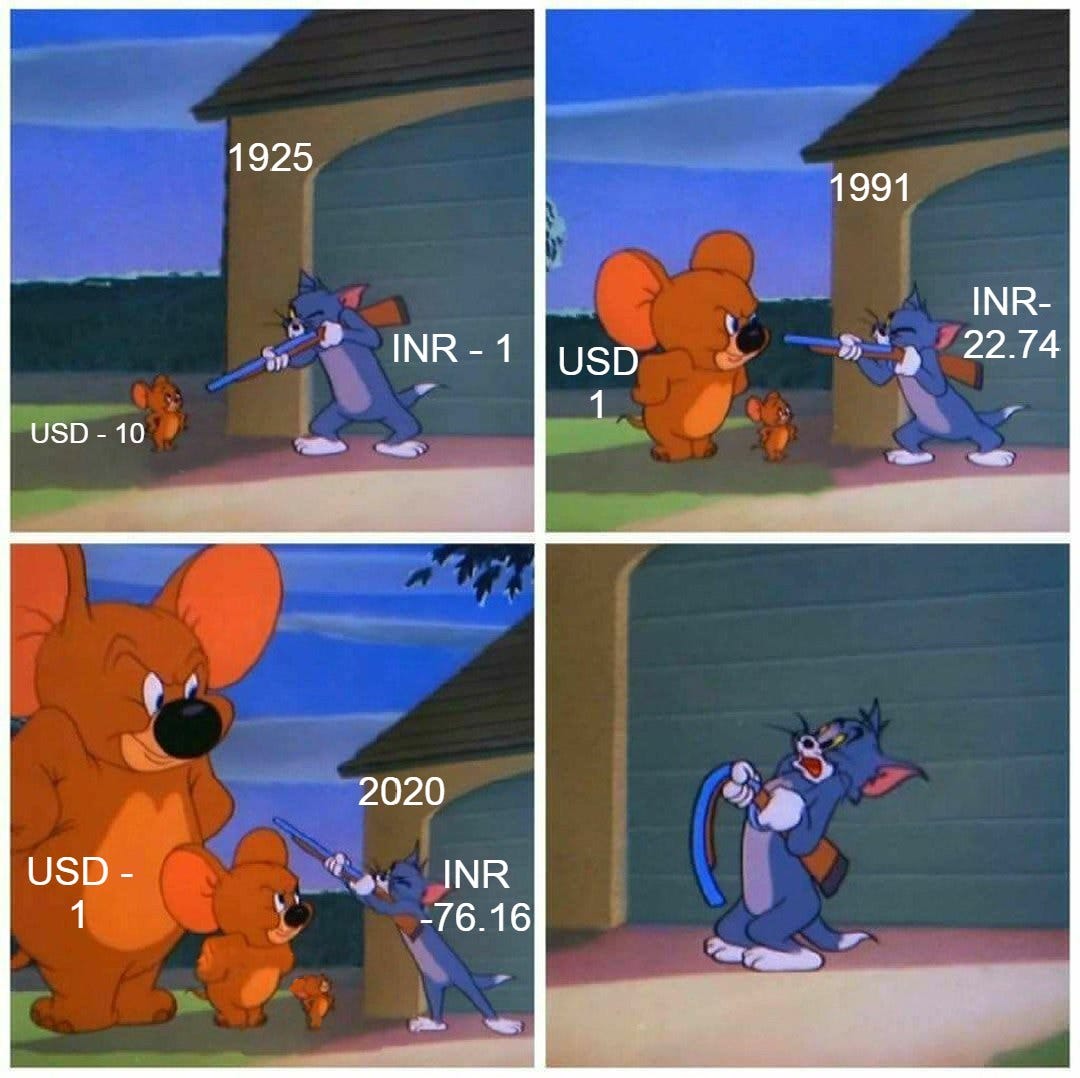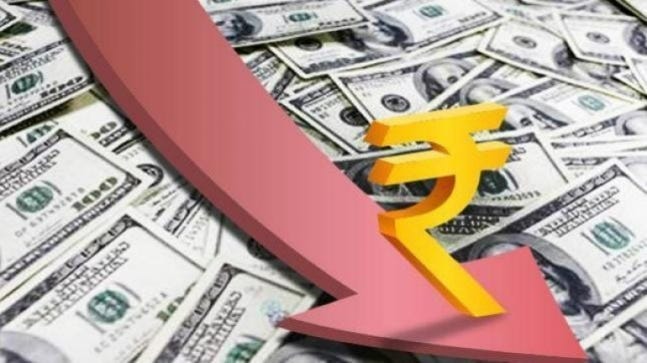Hello, hope you are having a great Sunday. This week’s newsletter covers Madam President’s journey in Politics and why is Indian currency depreciating.
Job Board
Public Policy and Government Relations Counsel Manager, Google
To apply, click here
Public Relations Intern, Humans of Rural India
To apply, click here
Intern for Communications Vertical, Population Foundation of India
To apply, click here
A Journey of Grace from Mayurbhanj to the Rashtrapati Bhavan
Droupadi Murmu will be the first tribal woman and the youngest citizen to become the President of India. With several “firsts” attached to her designation, she is set to take the oath on 25th July, succeeding current President Ram Nath Kovind.
Former Jharkhand Governor and National Democratic Alliance (NDA) candidate, Murmu was elected the 15th President of India on Thursday, 21st July. Her candidature was backed by different political parties during the campaign trail and she registered an easy win over the opposition's pick Yashwant Sinha.
Building her own Category
Born in a Santhali tribal family, Murmu was the first woman in her village to leave for Bhubaneshwar for college. Starting her career as a school teacher, she then worked as a government clerk before joining BJP in 1997.
Hailing from Mayurbhanj, one of the more backward regions of Odisha, she has held various positions in the party rising through the ranks and was a minister in the state when the BJP was in alliance with the ruling Biju Janata Dal in Naveen Patnaik’s government.
From 2006-2009, Murmu was the President of BJP’s Scheduled Tribe Morcha in Odisha. Having served as the Governor of Jharkhand between 2015-2021, she is all set to take her position in the Rashtrapati Bhavan.
The presidentship of Droupadi Murmu will be a precedent for women across the nation, for whom she will be “a shining example of women empowerment,” as rightly said by Odisha CM Naveen Patnaik.
(Source: The Hindu, Times of India, Mint, Economic Times)
Depreciating Indian Currency
The Indian rupee hit the 80-mark against the US dollar on 19th July 2022. The depreciating Indian rupee resulted in the price rise of essential commodities, putting the consumers in a difficult situation.
(Due to the weak rupee, the Indian importers have to pay more for the same quantity of items. In such cases, the cost of raw materials and production goes up which gets passed on to the consumers.)
On 11th July 2022, the Union government stated in the Parliament that the value of the Indian rupee against the dollar has fallen by Rs 16.08 (25.39 per cent) in the last eight years.
Reasons fuelling depreciation of the Indian currency
#1 Withdrawal of Foreign Institutional Investors (FIIs)
The depreciation of the rupee, and incrementing value of the dollar, have pushed foreign investors to pull out the money from risky markets like India and invest in the US.
Around Rs 1.81 lakh crore has been withdrawn from the markets. High inflation and constraints in the supply chain are the underlying reasons for the sudden withdrawal which has further impacted the currency value.
#2 Monetary policies of Asian countries
The currencies all across Asia have not performed well over the last few months of 2022. For instance, China’s currency hit its 18th-month low against the US dollar because of COVID-19 and supply chain disruptions.
Moneycontrol, a Business and Finance media house, highlighted, that the weak monetary policies of the neighbouring countries contributed to the downfall of the Rupee.
#3 The Dollar’s role
The food and energy prices drove consumer price inflation in the United States to 8.6 %, which is its highest level since December 1981. This prompted the US federal reserve to increase the interest rates, which is the highest rise in nearly 30 years.
This step sent the dollar up by 10% while putting countries under pressure which had the process of payment be done in dollars, including India.
Plan of action
To encounter the situation, the Reserve Bank of India has taken a series of measures to encourage dollar inflow into the country.
#1 Opened the lending and investment window for the term deposits of foreign and Indian currency. This will encourage the banks to issue these deposits at a much higher return.
#2 Temporarily removed the interest rate cap, which will allow banks to offer a higher interest rate and attract an inflow of the dollar.
#3 Opened more avenues for foreign portfolio investors in government securities and corporate bonds.








